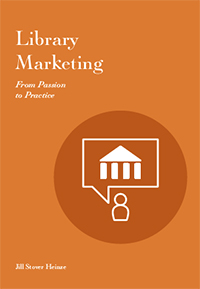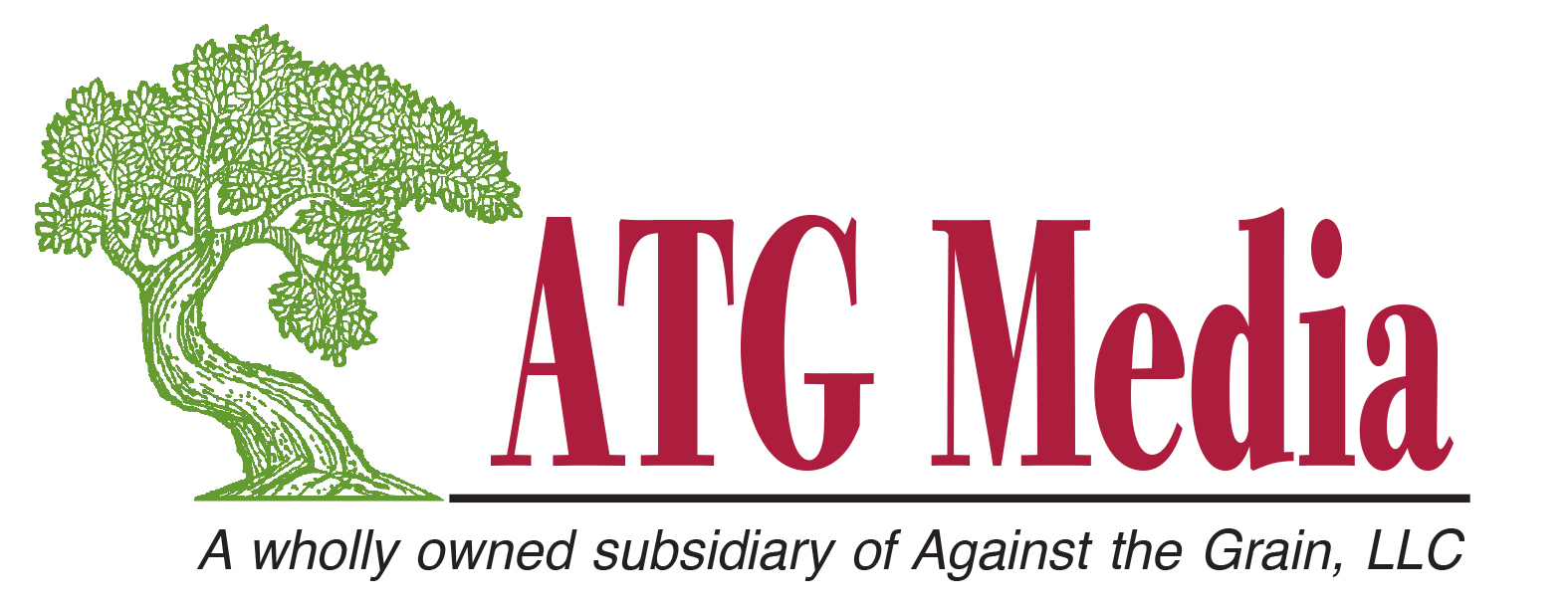
Library Marketing: From Passion to Practice
Skip other details (including permanent urls, DOI, citation information): This work is licensed under a Creative Commons Attribution-NonCommercial-NoDerivatives 4.0 International License. Please contact mpub-help@umich.edu to use this work in a way not covered by the license.
For more information, read Michigan Publishing's access and usage policy.
Coming to Terms
You Get the Marketing You Make
Marketing’s close association with damaging or trivial business outcomes has generated a goodwill deficit with many consumers. The deficit is even more acute among librarians due to the uneasy relationship between marketing and libraries.
What is important for librarians to keep in mind is that marketing is only as good or bad as one makes it. Unethical practices and private-sector intrusions into public domains are legitimately concerning, but adopting marketing practices does not absolve wrongdoings or make us complicit with them. A more productive way to view marketing is as a means, not an end. Embracing marketing grants us the ability to wield all of the tools at our disposal to give our mission the best chance of success, and it does not require resigning ourselves to unethical practices or inauthentic representations of who we are and what we offer. The choice is one we have to make mindfully: We can choose to be dismissive of marketing and subsequently forgo all the knowledge and proven methods we could leverage, or we can wholeheartedly welcome marketing into our organizations to hone it for our own needs.
One could argue that marketing has existed in some form or another for as long as people have exchanged goods. Though marketing principles, theories, frameworks, and practices have formalized and evolved over time, exchanging goods for items of value—the essence of marketing—is something of a human constant. During that long history, marketing’s presence in robust economies has become ubiquitous.
While marketing may be ever-present, its reputation seems to be mixed at best and abysmal at worst—and not without good reason. Take, for example, the egregiously unethical and socially devastating advertising sponsored by the lead industry in the mid-20th century, whereby industry leaders rebuffed any attempt to restrict its product despite known public health risks. For decades after the 1920s, the lead industry churned out ads promoting the hazardous substance even to families and children, going so far as to distribute coloring books containing instructions on how to prepare lead paint (Rosner & Markowitz, 2013)!
What could generously be called misleading and annoying advertising persists today, prompting legislators to rein in ads for products like tobacco and regulate e-mail communications.[1] Even the promotion of seemingly innocuous luxury and convenience products is cited by marketing detractors as wasteful attempts to part people from their money by enticing them to buy knickknacks and status symbols they do not truly need, cluttering homes, roadways, and landfills.
We must remarket marketing within the library profession so that we feel more invested in and comfortable with it. To do so, it is helpful to recognize the ways in which modern marketing is increasingly aligned with our professional values and goals. Therefore, we need to move beyond the American Marketing Association’s useful but basic marketing definition to a more nuanced view that will resonate with librarians.
Marketing luminary Philip Kotler has authored dozens of seminal texts on marketing and is the S. C. Johnson & Son Professor of International Marketing at the Kellogg School of Management at Northwestern University. Among his many publications, Kotler coauthored the 2010 book Marketing 3.0 (Kotler, Kartajaya, & Setiawan, 2010), in which the authors argue that marketing has evolved from a product- and organization-oriented activity—which they call Marketing 1.0—to a more customer-centric and socially conscious one. Their analysis is particularly helpful for librarians who are unaware of marketing’s dynamism and increasing harmony with our own goals.
In their book, Kotler et al. (2010) trace marketing’s progress through three stages—Marketing 1.0, 2.0, and 3.0—as follows:
- Marketing 1.0 can be understood by imagining a factory: A factory churns out a bunch of widgets, and the marketers (salespeople, advertisers, distributors, etc.) are enlisted to push those widgets out into customers’ hands for a profit. Marketing 1.0 is a main culprit in establishing marketing’s questionable reputation, since it is more focused on unloading stock than on meeting customer needs.
- Kotler et al. argue that the next phase in marketing’s evolution is Marketing 2.0, a shift from the widget factory mind-set to one that puts serving the needs and desires of customers at the forefront (like the AMA’s definition).
- From Marketing 2.0, marketing has moved on to yet another stage, Marketing 3.0. As Kotler et al. describe it, “Companies practicing Marketing 3.0 have bigger missions, visions, and values to contribute to the world; they aim to provide solutions to address problems in the society. Marketing 3.0 lifts the concept of marketing to the arena of human aspirations, values, and spirit” (Kotler, Kartajaya, & Setiawan, 2010, p. 4). They argue that Marketing 3.0 firms feel compelled by the impact of massive social and cultural forces such as globalization, environmental degradation, and spiritual uncertainties to create offerings that address the whole “human spirit.”
In supporting their argument, Kotler et al. cite a number of companies that behave in ways consonant with Marketing 3.0 principles. Timberland, for instance, is an environmentally aware footwear and apparel producer that closely adheres to a green business model. The company fulfills its green goals through rigorous self-imposed environmental standards for producing its entire line of products so that they remain faithful to their social mission. As the company states, “At Timberland, we hold ourselves accountable for what goes into our products as well as how they’re made, and we’re constantly seeking innovative solutions to reduce their environmental impact” (Timberland, n.d., para. 5).
While a Marketing 3.0 strategy like Timberland’s represents an evolution in its corporate mind-set and accountabilities, libraries were Marketing 3.0 organizations from “birth.” Consider the American Library Association’s equally aspirational and slightly business-oriented expression of libraries’ societal contributions as outlined in its current “Libraries Transform” promotion campaign: “Libraries transform lives. Libraries transform communities. Librarians are passionate advocates for lifelong learning. Libraries are a smart investment” (American Library Association, n.d., para. 8). Given libraries’ distinguished record of public and community service, today’s corporate marketing philosophy is catching up to resemble the views librarians have held for decades. Marketing and librarianship are becoming intellectually closer, at least as embodied by Kotler et al.’s articulation and the work of other forward-thinking marketers. As a result, we can fruitfully look to Marketing 3.0–like behaviors to help us imagine concrete, compatible ways of applying our own ideals throughout our libraries. Moreover, we can feel good about doing so.
Looking at business examples is helpful in the case of libraries because even though librarians tend to be aligned intellectually and emotionally with the drive to address large-scale societal needs and nurture people’s aspirations, holistic library implementations of comprehensive marketing approaches are scarce. In order to achieve the kind of insight into personal and social needs necessary to coalesce a sound user-focused strategy, organizations need to focus their activities on the people they serve. This means insinuating robust user feedback mechanisms into our operations so that we may regularly solicit, receive, analyze, and distribute that feedback and apply the insights gained effectively and purposefully to service designs and improvements. In fact, in a “true” modern marketing organization, all functions of the business work together on all aspects of service (or product) development to identify and address the needs and wants of its customers—an idea generally referred to as the “marketing concept” (Perreault & McCarthy, 2005, p. 17).
Rarely, though, do librarians extend this concept as fully into their operations as Northern Kentucky University’s Steely Library did. Steely Library is an example of a library that has established the requisite conditions for Marketing 3.0–type success on an organizational scale. Steely librarians took on this challenge of changing what its leadership identified as old-fashioned thinking about marketing to a model that is more responsive to the people it serves (Almquist, 2014). Specifically, library leadership created two permanent work teams: a marketing work team (MWT) and an assessment work team (AWT). MWT staff conduct market research and handle external and internal communications, while AWT staff obtain internal operational and survey data from functional units. Librarians positioned the teams centrally within the organization to work closely together and with the library’s service units to direct the library’s energies toward acting upon demonstrable user desires and generating an ongoing cycle of feedback and responsiveness.
While this approach does not guarantee success, what sets Steely Library apart is that its librarians imposed a formal structural and cultural commitment to marketing and user accountability. By making responsiveness to users intrinsic to their operations, Steely librarians are well positioned to bring the full force of their efforts to bear on identifying and resolving user needs.


